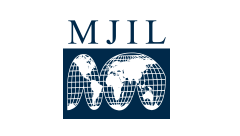Abstract
This article builds upon queer feminist and decolonial/TWAIL interventions into the history of international law, questioning the dominant discourses about gender and sexual victimhood in the laws of armed conflict. In Part One, I examine how early European international law writers (re)produced binary and hierarchical ideas about gender in influential legal texts, discursively creating a world in which wartime violence only featured men and women in strictly defined roles (a construction which continues to influence the practice of law today). In Part Two, I decenter these dominant discourses by looking outside Europe, questioning what a truly “international” law would look like if non-Western ideas about gender diversity and hierarchy had instead been allowed to contribute to its development. I demonstrate how gender diversity was the norm, not the exception, for multiple Indigenous and non-Western communities prior to colonization, drawing new connections between gendered oppression, colonial violence, and the continued practice of international law. This analysis provides an important bridge between queer and TWAIL critiques of international law, challenging lawyers and academics to think beyond mainstream ideas about binary gender when considering gender-based violence.
Recommended Citation
David Eichert,
Decolonizing the Corpus: A Queer Decolonial Re-examination of Gender in International Law's Origins,
43
Mich. J. Int'l L.
557
(2022).
Available at:
https://repository.law.umich.edu/mjil/vol43/iss3/3
Included in
Feminist, Gender, and Sexuality Studies Commons, International Humanitarian Law Commons, International Law Commons, Law and Gender Commons

